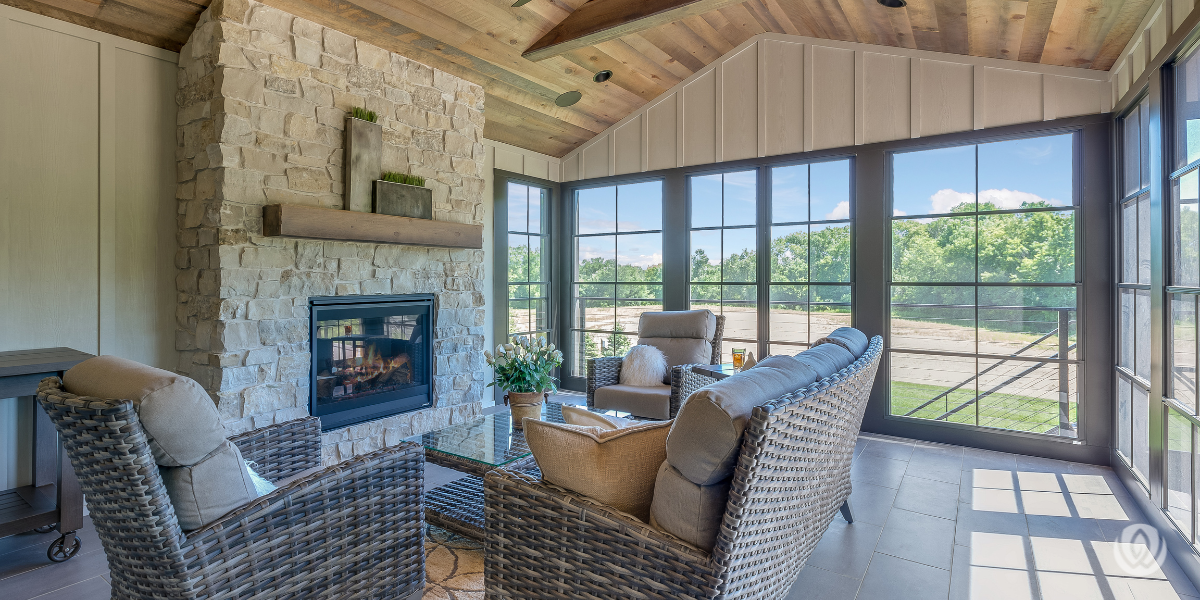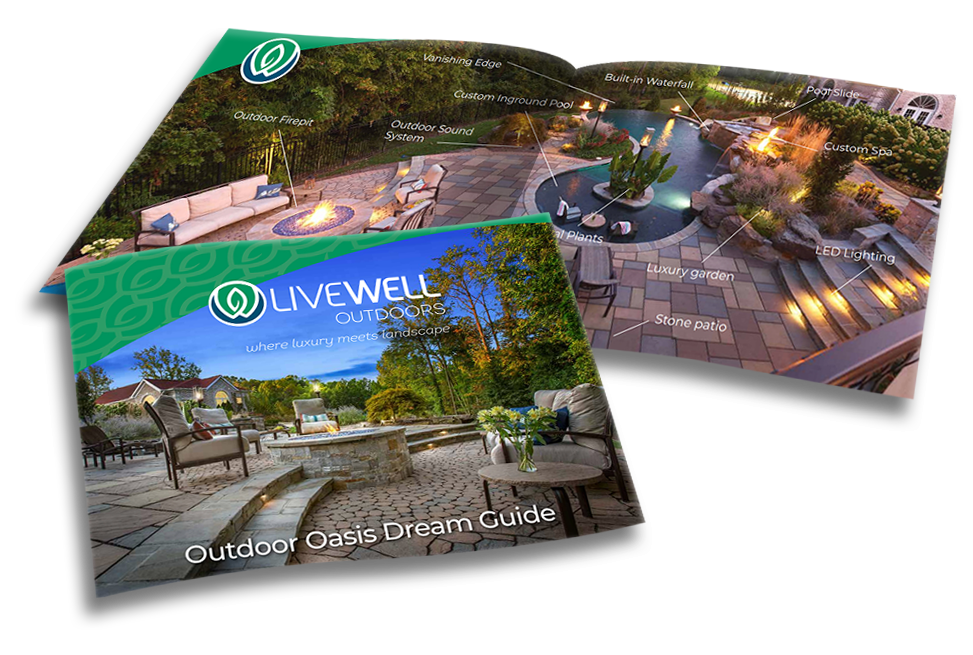
As winter’s chill approaches, you must prioritize protecting your outdoor investments, especially your patio, with all its furnishings and amenities. Cold winds, frost, and snow don’t have to keep you from enjoying your outdoor space. With the right preparations, you can transform your patio into a comfortable, winter-ready retreat. In this comprehensive checklist, we break down the essential steps and considerations for how to enclose a patio, guaranteeing you have a snug space to enjoy even when the snow blankets your yard.
Before diving headfirst into creating a winter patio enclosure, it's crucial to take a step back and evaluate what you already have. Your patio's existing area will determine how you approach the enclosing process.
Start by walking around your patio and taking a close look at its boundaries. Are there any existing walls, fences, or railings? What materials are they made of? Understanding the current layout helps you determine how best to enclose it without compromising its aesthetic appeal.
Take necessary measurements, and consider any fixed elements like outdoor fireplaces, water features, or built-in seating. Doing so will guarantee that whatever changes you make are both functional for your needs and harmonious with the existing design.
Even before the onset of winter, certain areas of your patio might be prone to chilly breezes. Identify these drafty spots by feeling for temperature drops, especially during early mornings or late evenings.
Pinpointing these areas early on is essential. When you know where the cold is most likely to creep in, you can address those spots when planning how to enclose your patio for winter.
Transforming your patio into a winter haven requires materials that fit your aesthetic preference and meet the season's demands. Your choices will greatly influence not only the ambiance but also the durability and functionality of your enclosed space.
It's all about selecting suitable materials that align with your needs, whether that’s a temporary fix for the season or a more permanent solution.
Opting for a temporary solution allows flexibility. You may enjoy the openness of your patio during the warmer months and only want an enclosure for winter. In this case, materials that can be easily installed and removed are ideal.
For those looking for a long-lasting solution that offers protection throughout the year, a permanent enclosure is the way to go. It's an investment that enhances your patio's usability and can increase the value of your property.
Regardless of the choice you make, proper installation is key. Properly secured enclosures, whether temporary or permanent, will help you enjoy a cozy environment in your patio all winter long.

While the primary goal of enclosing your patio for the winter months is to keep the cold out, it's equally important to keep the space well-ventilated. Without proper airflow, you could face issues like condensation, mold growth, and an uncomfortable atmosphere due to stagnant air.
Here's how to strike the perfect balance between warmth and fresh air circulation:
Condensation occurs when warm air, often from heaters or human breath, comes into contact with cold surfaces, such as the panels or sheets of your enclosure. Over time, this can lead to water buildup, mold, and even damage to furniture or flooring. To avoid this:
Having fixed or adjustable vents is an excellent way to regulate airflow without compromising the enclosure's insulation properties.
You need to consider how you’ll manage the elements before winter hits. Without proper precautions, drainage issues or snow buildup can compromise the integrity of your enclosure and turn your cozy winter haven into a damp, icy mess.
One of the first things to check when preparing your patio for winter is its slope. The ideal patio will have a slight gradient that directs water away from the main living areas and towards designated drainage points.
Inspect your patio after a rainfall or by splashing water to see where it collects or drains. Puddles or water logging are clear indications of problematic areas.
If your patio doesn't have the necessary slope, consider consulting with professionals to make the required adjustments. This might involve installing drains or trenches or resurfacing the patio for adequate water runoff.
In regions prone to heavy snowfall, snow buildup on and around your patio can pose significant challenges. Excessive weight from snow can strain your enclosure, while melting snow can lead to flooding or ice formation.
Regularly clearing snow from your patio's surfaces, especially after heavy snowfalls, will further reduce risks and ensure that your winter patio enclosure remains a safe, dry, and inviting space throughout the season.

No matter how well you've enclosed the space, the effectiveness of your winter patio largely depends on how well it retains warmth. Here are some tips to bolster your patio's insulation and ensure it remains a snug retreat even on the coldest days.
Inspect the entire enclosure, paying close attention to joints, seams, and the points where the enclosure meets the patio's floor or existing walls.
Use weatherstripping, caulk, or sealant to close off any gaps or openings you find. Even small gaps can let in a surprising amount of cold air, so be thorough in your inspection and sealing efforts.
The floor of your patio can become quite cold, especially if it's made of stone, tile, or concrete. Addressing the floor can make a significant difference in overall warmth.

For added warmth and a touch of ambiance:
By focusing on these warmth retention strategies, you can guarantee that your winter patio enclosure is protected from the cold and is a comfortable and inviting space to relax and entertain in.
Remember to stay safe when using heating elements. It's crucial to ensure that these heat sources are positioned safely and don’t pose a risk to the enclosure materials or those enjoying the space.
With winter's unpredictable weather, regular maintenance and checks are vital to keep your space functional and inviting. Here are some critical maintenance steps and checks to ensure your patio remains in top condition throughout the cold months.
Wind, snow, ice, and fluctuating temperatures can all contribute to the wear and tear of your patio enclosure.
Snow and ice can be particularly damaging to patio enclosures. Their weight can strain the structure, and as they melt, they can cause water damage or icy patches.
Regular maintenance and checks are not just about prolonging the life of your enclosure; they're also about ensuring the safety and comfort of everyone who enjoys the space. By staying proactive and attentive to your winter patio enclosure's needs, you can face the winter with confidence, knowing your outdoor oasis is well-prepared.
Transforming your outdoor space into a year-round oasis isn't just about surviving the winter—it's about thriving in every season. At LiveWell Outdoors, we pride ourselves on creating distinctive designs that elevate every moment you spend outside.
With over 20 years of experience, our team is equipped to offer personalized experiences and a seamless process from dream to reality. We understand that your backyard is more than just a space—it's a haven, a retreat, and a gathering place.
Ready to elevate your outdoor experience further? Dive into our rich portfolio for a glimpse into the luxury outdoor living spaces we've crafted.
Inspired? Don’t hesitate. Schedule a consultation with our experts today and take the next step towards building your luxury outdoor retreat.
"*" indicates required fields
